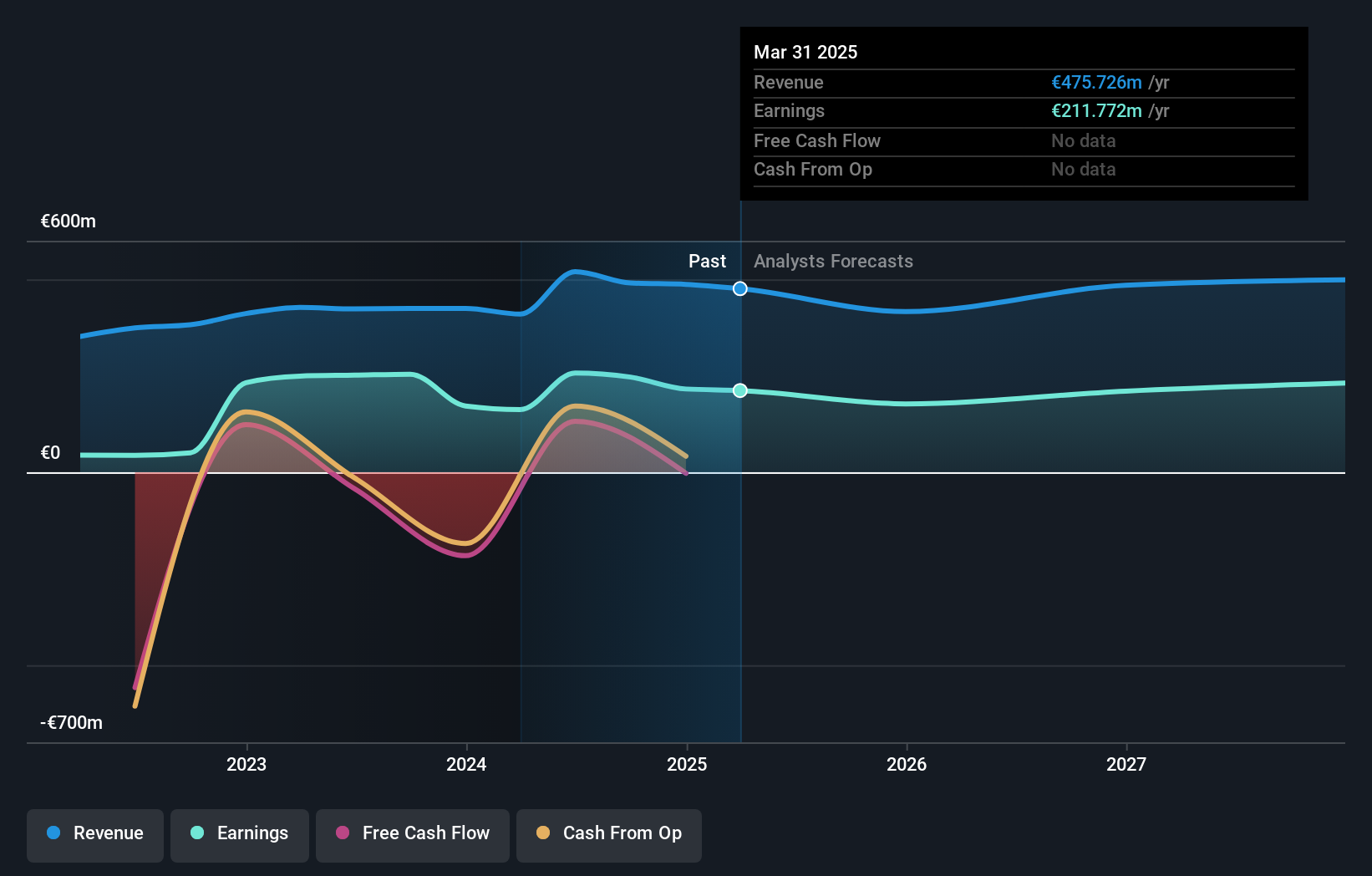- Italy
- /
- Diversified Financial
- /
- BIT:BFF
Institutions profited after BFF Bank S.p.A.'s (BIT:BFF) market cap rose €96m last week but individual investors profited the most
Key Insights
- The considerable ownership by individual investors in BFF Bank indicates that they collectively have a greater say in management and business strategy
- 42% of the business is held by the top 25 shareholders
- Institutions own 42% of BFF Bank
Every investor in BFF Bank S.p.A. (BIT:BFF) should be aware of the most powerful shareholder groups. With 53% stake, individual investors possess the maximum shares in the company. In other words, the group stands to gain the most (or lose the most) from their investment into the company.
Following a 5.3% increase in the stock price last week, individual investors profited the most, but institutions who own 42% stock also stood to gain from the increase.
Let's take a closer look to see what the different types of shareholders can tell us about BFF Bank.
Check out our latest analysis for BFF Bank

What Does The Institutional Ownership Tell Us About BFF Bank?
Institutions typically measure themselves against a benchmark when reporting to their own investors, so they often become more enthusiastic about a stock once it's included in a major index. We would expect most companies to have some institutions on the register, especially if they are growing.
As you can see, institutional investors have a fair amount of stake in BFF Bank. This implies the analysts working for those institutions have looked at the stock and they like it. But just like anyone else, they could be wrong. When multiple institutions own a stock, there's always a risk that they are in a 'crowded trade'. When such a trade goes wrong, multiple parties may compete to sell stock fast. This risk is higher in a company without a history of growth. You can see BFF Bank's historic earnings and revenue below, but keep in mind there's always more to the story.

Hedge funds don't have many shares in BFF Bank. Looking at our data, we can see that the largest shareholder is Capital Research and Management Company with 5.2% of shares outstanding. The second and third largest shareholders are Artisan Partners Limited Partnership and Massimiliano Belingheri, with an equal amount of shares to their name at 5.0%. Massimiliano Belingheri, who is the third-largest shareholder, also happens to hold the title of Member of the Board of Directors.
Our studies suggest that the top 25 shareholders collectively control less than half of the company's shares, meaning that the company's shares are widely disseminated and there is no dominant shareholder.
While studying institutional ownership for a company can add value to your research, it is also a good practice to research analyst recommendations to get a deeper understand of a stock's expected performance. Quite a few analysts cover the stock, so you could look into forecast growth quite easily.
Insider Ownership Of BFF Bank
The definition of an insider can differ slightly between different countries, but members of the board of directors always count. Management ultimately answers to the board. However, it is not uncommon for managers to be executive board members, especially if they are a founder or the CEO.
Most consider insider ownership a positive because it can indicate the board is well aligned with other shareholders. However, on some occasions too much power is concentrated within this group.
Shareholders would probably be interested to learn that insiders own shares in BFF Bank S.p.A.. The insiders have a meaningful stake worth €98m. Most would see this as a real positive. Most would say this shows alignment of interests between shareholders and the board. Still, it might be worth checking if those insiders have been selling.
General Public Ownership
The general public -- including retail investors -- own 53% of BFF Bank. This level of ownership gives investors from the wider public some power to sway key policy decisions such as board composition, executive compensation, and the dividend payout ratio.
Next Steps:
It's always worth thinking about the different groups who own shares in a company. But to understand BFF Bank better, we need to consider many other factors. Like risks, for instance. Every company has them, and we've spotted 2 warning signs for BFF Bank (of which 1 shouldn't be ignored!) you should know about.
If you would prefer discover what analysts are predicting in terms of future growth, do not miss this free report on analyst forecasts.
NB: Figures in this article are calculated using data from the last twelve months, which refer to the 12-month period ending on the last date of the month the financial statement is dated. This may not be consistent with full year annual report figures.
Valuation is complex, but we're here to simplify it.
Discover if BFF Bank might be undervalued or overvalued with our detailed analysis, featuring fair value estimates, potential risks, dividends, insider trades, and its financial condition.
Access Free AnalysisHave feedback on this article? Concerned about the content? Get in touch with us directly. Alternatively, email editorial-team (at) simplywallst.com.
This article by Simply Wall St is general in nature. We provide commentary based on historical data and analyst forecasts only using an unbiased methodology and our articles are not intended to be financial advice. It does not constitute a recommendation to buy or sell any stock, and does not take account of your objectives, or your financial situation. We aim to bring you long-term focused analysis driven by fundamental data. Note that our analysis may not factor in the latest price-sensitive company announcements or qualitative material. Simply Wall St has no position in any stocks mentioned.
About BIT:BFF
BFF Bank
Engages in non-recourse factoring and credit management activities towards public administration bodies and private hospitals in Italy, Croatia, the Czech Republic, France, Greece, Poland, Portugal, Slovakia, and Spain.
Reasonable growth potential with adequate balance sheet and pays a dividend.
Market Insights
Community Narratives




